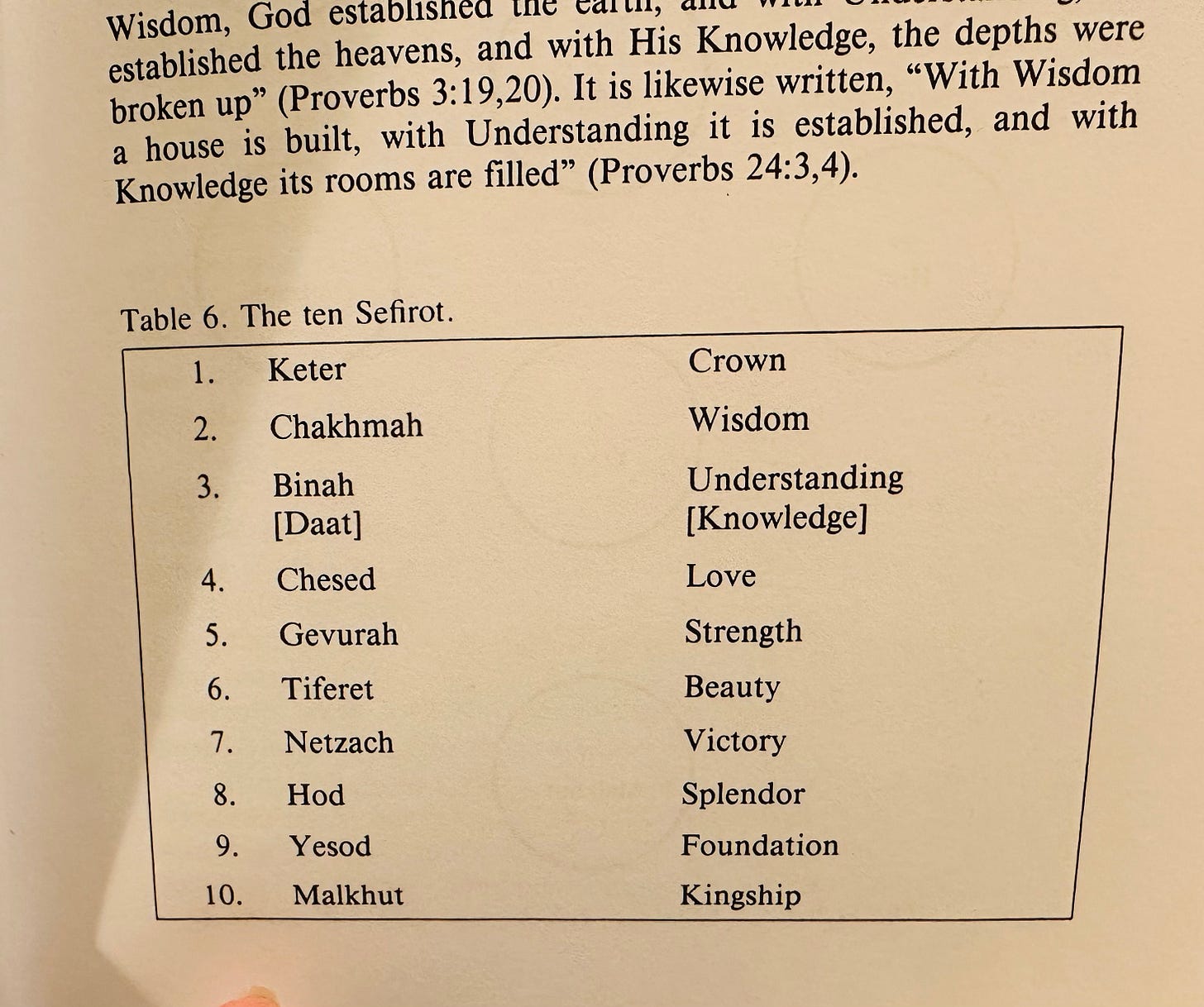Dreams as Training Ground for Telepathy and Soul Growth
We must begin to relate differently to images
Nothing I will tell you here is “proven,” and yet it’s been written about and taught in small esoteric circles for at least two thousand years. It’s information that was traditionally passed from adept to student, but also somehow ended up in a text or a manuscript, and therefore preserved. I stumbled upon it, however, on my own, by direct experience, over time, unintentionally. So that when I finally discovered only in recent years that Jewish mystics (and other mystical traditions) had been writing about it and practicing it for centuries, the news came less as a surprise and more as validation for what seemed to already be happening to me.
Here it is: My dreams, over time, have been trying to teach me how to communicate telepathically. More specifically, dreams, in general, are attempting to show us how to transmit and receive in image and feeling, rather than verbally, with spoken words. Except, we must remember our dreams in order to actively participate in the training. Are you?
Looking back now, it’s easy to see this training began very early in my life. In fact, I think it was the nightly training that probably sparked my original curiosity in dreaming and the supernatural, rather than the other way around. It was because I had strange unexplainable experiences in dreams as a child that gave rise to the questions I sought answered through books I couldn’t find in any library or book store.
As a child, I would often dream very vividly of individuals I felt fondness for or even deep love for, but who I discovered upon waking, only existed in my dreams. This caused me great distress. It was also in early childhood that I made a friend at a day camp who shared my interest in psychic phenomena, and agreed to try communicating with each other at night in dreams. Sometimes it seemed to work! I became a voracious reader as a child, and would seek out all the books in the kid section with paranormal themes. It was the only way I could commune with others — even fictional others — who knew what I knew: that reality wasn’t exactly as it seemed to most people.
Despite my belief early on — through what felt like direct experience — in telepathy, precognition, telekinesis, and time travel, adults and society made it pretty clear I was foolish to pursue those arts. There was certainly no formal outlet to pursue them, and as far as I could tell, no one (outside a handful of family members and this one friend) was going to take my beliefs seriously, let alone teach me or guide me.
As a young adult, I continued to dream vivid dreams and knew they were important, knew there was more to them than mainstream science only superficially taught in school (ie. memory consolidation, emotional processing, repression of unwanted desires etc.) But life and love took me in other directions, and dreams became just a side interest, attracting my attention only from time to time during the years my focus was on marriage, work, and raising children.
It’s only been in the last decade-and-a-half that I’ve finally started paying close attention to my dreams again. I couldn’t not pay attention after I started seeing images from my dreams appear in waking life: first (for many years) on social media as I scrolled, then later in encounters in the everyday. I began to recognize replays of dream events in waking life — which didn’t occur as literal playbacks of dreams, but rather as similar enough storylines that one must at least ask oneself, “how can that be?”
In these ways, I started realizing that there was more to dreaming than I had ever realized, had ever been told. I started my research into dreams, memory, and time, and eventually began working my own dreams closely with a dreamwork practitioner.
Once you start regularly recording your dreams and especially once you start working them with someone who can help you notice how you behave in your own dreams, you start to realize it’s not the dream itself that is strange, necessarily. But rather, that you are expecting the dream to behave the same way waking life reality does. Not only that, but you are bringing your waking life self into dream world, expecting things to carry on as they do in waking life.
But dream world is not waking life.
My dreamwork practitioner showed me how I do this and offered me tools for interrupting the patterns, habits, and reactivity I brought into my dreams. Over time, I began to perceive and act differently inside the dream. Slowly, over time, as I shifted the way I responded to the images of my dreams, I realized that the “language” of dreams (said another way, the “language” of my soul) is not the same as the language we use to communicate with each other in ordinary reality.
If you really want to communicate with your soul/ higher self / spirit, you must understand it’s not through letters or words that our soul speaks. It’s through images and ultimately feelings. Deep feelings. Not reactive surface-level emotions like anxiety, shame, guilt, jealousy, blame, or reactive anger. But rather deep feeling, including our own sensuality, desire, and longing. We need to be willing to be with the full range of feeling, too. Not only the positive feelings of awe, wonder, joy, and delight. But also fear, grief, and productive anger. To learn to communicate with our soul, we must allow the dreams — all of them, if possible, but some is fine — to arise to our conscious awareness and recall them, including the ones that confuse us and terrify us.
These dream images bring with them wisdom. Working with them in waking life eventually allows us to understand them better. However, if we relate to these dream images the same way we relate to the sensory input of our waking life it is unlikely we will receive the soul’s message.
The Jewish mystics offer a related teaching. In the Kabbalistic Tree of Life, there are two Sefirot (what Kabbalah scholar Daniel Matt calls “openings for the human soul to approach God”) identified as “Wisdom” and “Understanding.” Ideally, there is a channel and a relationship between the two.
As Rabbi Aryeh Kaplan writes in his translation of the mystical text Sefer Yetzirah, “Wisdom is associated with the nonverbal right hemisphere of the brain, while Understanding is associated with the verbal left hemisphere.” (Note: While dreaming, the regions in the left hemisphere of the brain are less active than they are during waking, and regions in the brain’s right hemisphere are more active.)
Kaplan continues, “As the Kabbalists explain, Wisdom is only experienced when it is clothed in Understanding.”
Here I consider how the teaching possibly relates to how we modern humans typically respond to perceptual experiences in waking life. An image or sense experience arises and we typically react in some familiar-to-us, left-brain way: many of us analyze and assess, and then respond (often, with action or speech.) Certainly, to survive and interact with other humans and animals, this type of response is sometimes necessary.
But what about in dreams? What if instead of analyzing, assessing, and reacting to our dream images, we were to slow down, sense them, feel them? This would be more of a right-brain type response. Those of us who are artists or poets or musicians may already be more used to encountering stimuli this way. (Please note that I’m simplifying the complexities of the right and left hemispheres of the brain for this discussion.)
The Sefer Yetzirah instructs us that in order to grasp the Sefirot, to be able to “approach God” (which is not meant to be taken literally), the first step is to “Understand with Wisdom, and to be wise with Understanding.” Kaplan writes, “this involves a deliberate oscillation between Understanding and Wisdom, between verbal Binah consciousness, and nonverbal Chakmah consciousness.” Essentially, he is prescribing that the one who desires a closeness with the Divine (or an intimacy with one’s own soul) must learn how to oscillate between the two states of consciousness.
Could it be that in our dreams we are more receptive to an oscillating consciousness because our left brain is less active?
(Interestingly, a recent study showed that during REM sleep there is also a specific kind of fast back-and-forth rhythm between the two hemispheres of the brain that is unique to REM sleep and distance running.)
My suggestion is that recalling and working with our dreams (along with some right-brain stimulating exercises during the day) may decrease our reactivity and increase our capacity for this oscillating consciousness; ultimately leading us toward a fluency in “telepathic communication” with our soul.
If we really want to perceive and know the hidden realities — or even our own depths of soul — we cannot limit ourselves to logic, analysis, and speech. We must get better at imagination, sensuality, and deep feeling.
Most of us are infants in our development of the capacities afforded us by the right hemisphere of the brain. We don’t prioritize them, and so they lie dormant.
Dreaming gives us a fertile playground for imagining and feeling; as do the creative arts. Ultimately, with training, practice, and hopefully guidance from a skilled and humble dream teacher, the playground transforms into a vibrant classroom for learning what we already know how to do but forgot — perhaps instantly upon birth — how to communicate with our own soul.
As for telepathic communication between you and a fellow human — I venture to say, communicating with one’s own soul may be a first step.




